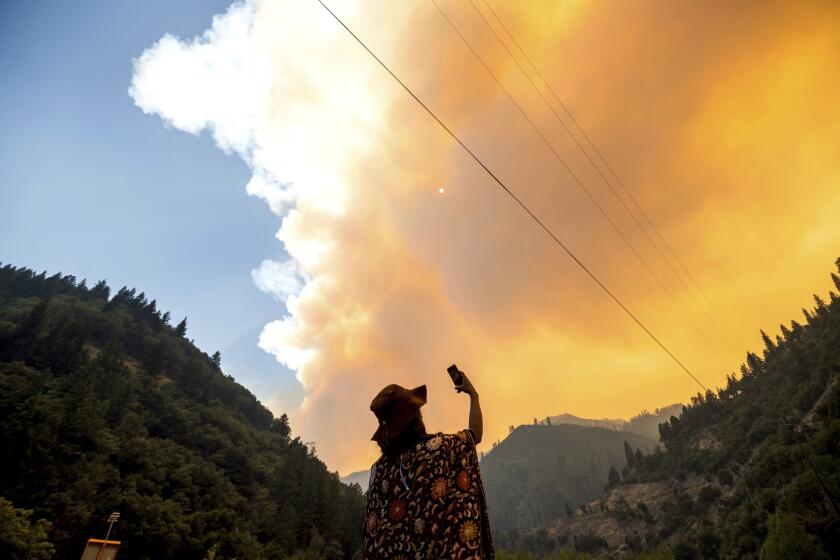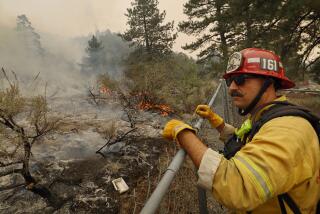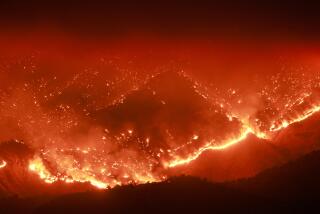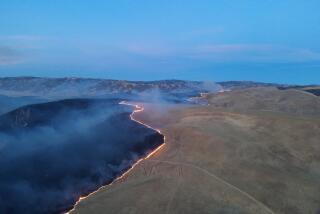The largest wildfire in the U.S. advances toward Oregon mountain towns
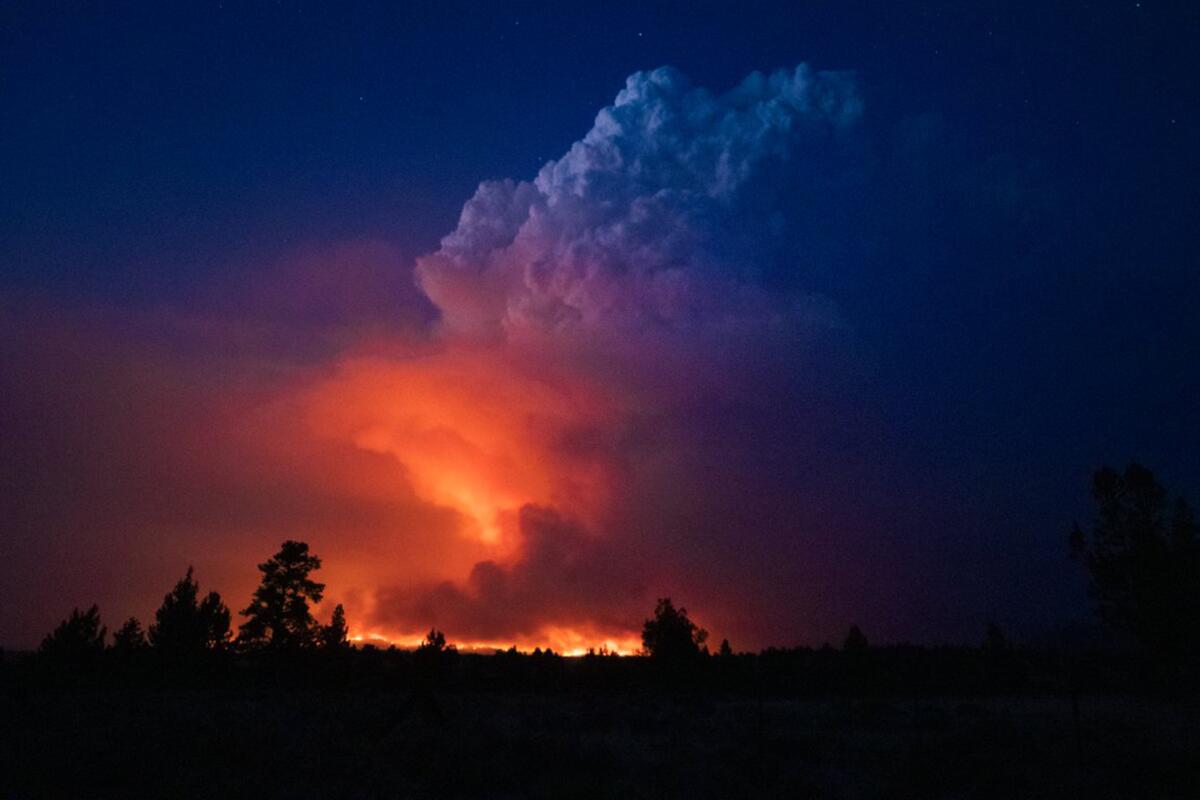
- Share via
BLY, Ore. — In 20 years of Oregon firefighting, Wayne Morris has never seen anything like the Bootleg fire.
Fire commanders had planned to flank the blaze that erupted about 300 miles southeast of Portland around the Fremont-Winema National Forest on July 6. But the fire proved too fast and intense, scorching more than 388,000 acres of southern Oregon forest — half the area of Rhode Island — destroying at least 70 homes and forcing thousands to evacuate. No injuries or deaths had been reported as of Tuesday afternoon.
The fire was only 30% contained Tuesday and continued to advance toward mountain towns, even as 2,250 firefighters and others fought it. The blaze absorbed a smaller one this week to become the largest wildfire now burning in the U.S., and fourth-largest in state history — so big that it has created its own lightning.
“We’re seeing things we’ve never seen before as far as size and activity,” Morris said as his crew walked the fire line, extinguishing flames.
Firefighters came to help from as far away as Florida and Kentucky, along with many from California. At a fire base in the tiny community of Bly, firetrucks were on hand from Fremont, Rancho Cucamonga and San Bruno.
Firefighters were sooty and exhausted after days of being forced to retreat as the blaze leaped over fire lines.
The Dixie and Tamarack fires have chewed through nearly 100,000 acres with little containment, officials said Tuesday.
Anaheim Fire Capt. Aaron Mooney arrived with his crew 10 days ago, and knows others in the area from Fullerton, Laguna Beach, Long Beach and Orange.
It was Mooney’s first time fighting fires in Oregon, but he said the Bootleg fire reminded him of those he had fought in recent years in Northern California. It was a timber-fueled fire as opposed to the wind-driven fires common in Southern California. He pointed to the towering pines that surrounded him, many of their trunks charred.
“It’s the timber litter — the ‘down and dead’ fuels, what falls out of the trees naturally,” Mooney said. He noted that it had been so unseasonably hot and dry in recent days that there was more than a 90% probability that new fires would be sparked.
On Tuesday, temperatures dipped, with clouds and even some spotty rain that helped firefighters tamp down lingering fires on the southern flank.
“We’re hoping to hold this line,” Mooney said as his team refueled a water truck.
The incident commander for the south side of the fire, Joe Hessel of the Oregon Department of Forestry, said Tuesday that he expected firefighters to gain control of the Bootleg fire’s southern flank within 48 hours.
Pointing to a map in his command post, set up at Lakeview High School on the fire’s southeast edge, Hessel traced the fire’s latest path northeast toward the rural communities of Paisley, Summer Lake and Silver Lake. Some residents who grew up around smaller wildfires had refused to evacuate, he said.
“They’ve lived with fire their whole lives,” he said. “But we’re not used to having million-acre fires” — which the Bootleg fire was shaping up to be.
A heat wave in the Pacific Northwest and western Canada was virtually impossible without human-caused climate change, a study says.
The largest forest fire in Oregon’s recent history was the Biscuit fire, which burned nearly 780 square miles in 2002 in the Rogue River-Siskiyou National Forest in southern Oregon and Northern California. Oregon’s megafires usually start after spring rains, and can burn until early winter. This year they started early, in March, before things had greened up, which firefighters said added to the fires’ strength.
On the Bootleg fire map, Hessel traced the western edge of Summer Lake’s basin, known as Winter Rim or Winter Ridge.
“If it goes over that rim, it’s going to get really challenging,” he said.
Hessel knows because he fought a fire in the area — the Winter Rim fire — in 2002, and remembers how it sucked hot air into the basin. That fire burned about 31,000 acres. The Bootleg fire was burning about as many acres each day.
In 38 years of firefighting, Hessel said, “I’ve never experienced that continuous, day after day fire behavior and growth.”
His counterpart to the north, Incident Cmdr. Rob Allen, was trying to stop the fire from reaching the lake’s rim Tuesday, sending helicopters to drop water and fire retardant, as firefighters on foot chopped logs and other brush that could feed the flames.
“Fighting this fire is a marathon, not a sprint,” Allen said. “We’re in this for as long as it takes to safely confine this monster.”
More to Read
Sign up for Essential California
The most important California stories and recommendations in your inbox every morning.
You may occasionally receive promotional content from the Los Angeles Times.

